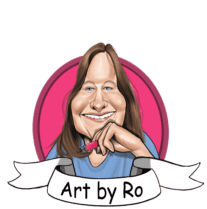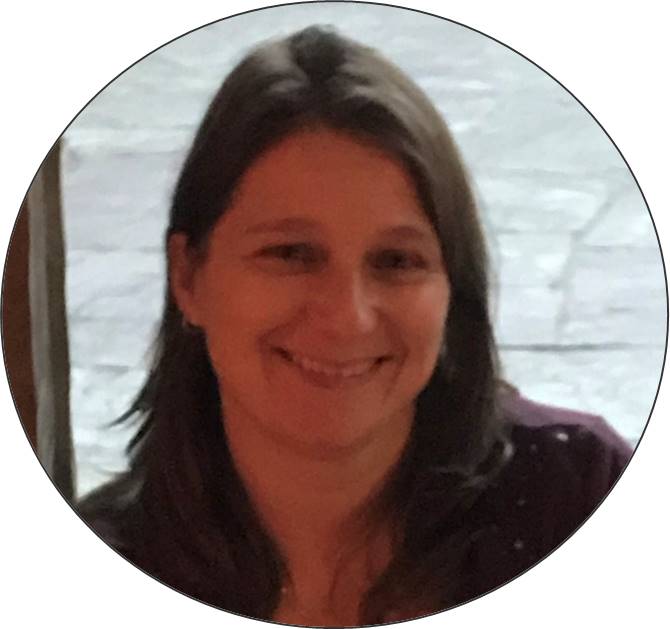How to Draw a Face for Beginners
There are many different ways to learn how to draw a face. The approach you’ll be learning today is a simplified technique designed to get you started.
There is a lot that goes into drawing faces. Especially if you’re trying to get a good likeness of the person. But we’ll save that for a later lesson.
The process is the same regardless of what type of person you are drawing. Young or old, man or woman. The technique will always be the same.
* Some of the links in this post may be affiliate links. This means I receive small commissions for purchases made through these links at no extra cost to you.
Art Supplies
Paper or cardstock
Reference photo (unsplash)
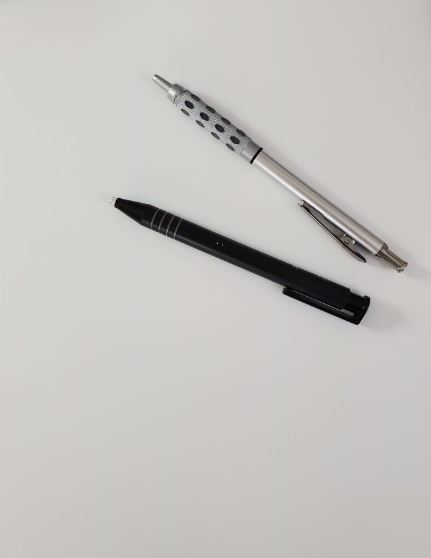
How to Draw a Face
To begin drawing a face, you’ll first need to layout some guidelines. Draw an oval that is roughly the same size as you want your final drawing to be.
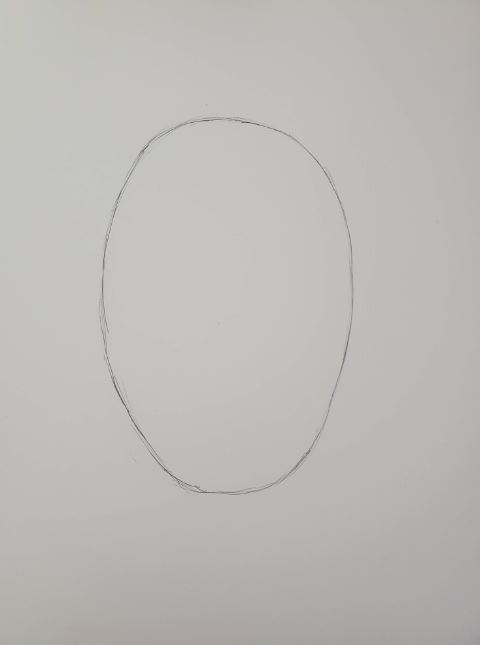
This is the overall shape of the head.
Next, divide the face down the center and across the middle. These will be your guidelines for placement and symmetry.

The line going across the middle (horizontally) will be where you will draw your eyes. Make another, shorter, horizontal line halfway between there and the bottom of your oval.
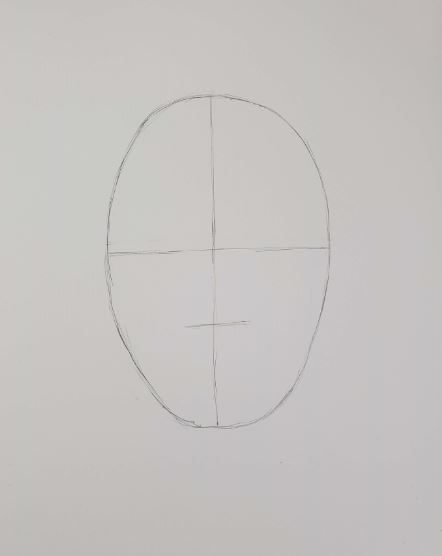
This is where you’ll draw the nose.
And then again halfway between the line for your nose and the bottom of the oval. This line is for the mouth.
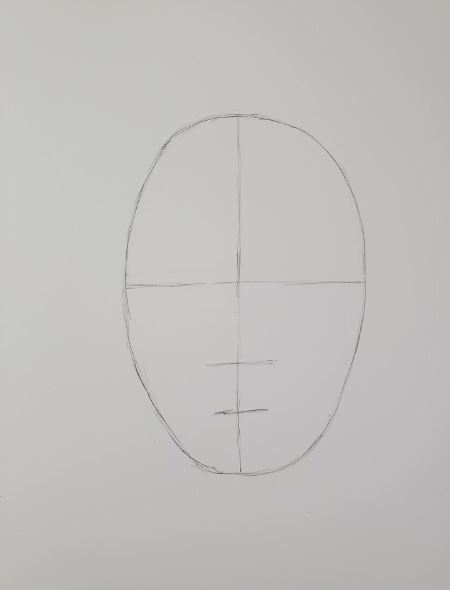
These are some general rules to get you started on drawing faces. Everyone looks different, so there really isn’t any one way to draw a face.
But this drawing lesson will show you how to draw a face, one way. There are many different approaches. Some easy, and some much more complex.
It’s easiest if you use some kind of reference photo. However, if you are just learning how to draw faces don’t worry too much about trying to capture the likeness.
That comes later.
Let’s start drawing in the features of the face by drawing the eyes.
Get Your FREE Face Drawing Guide
Drawing Eyes
To draw the eyes, begin by adding some additional guidelines. You want your eyes to be fairly close to the same size, and the space between the eyes to match the size of your eyes.

If you really look at someone’s eyes, they are not perfectly symmetrical. So don’t stress out too much if they’re not exact.
You can rough in your eyes with almond shapes to get the size and placement right.
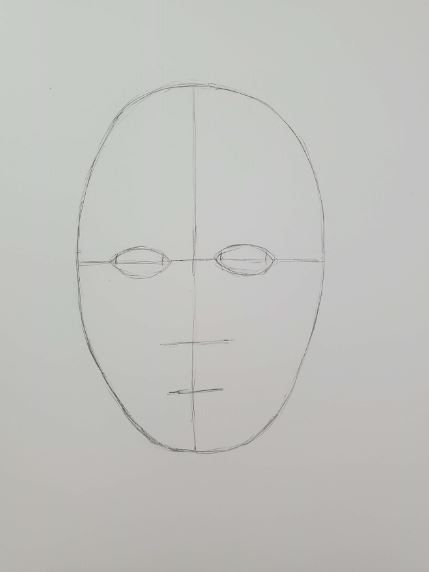
When you are satisfied with the size and placement of the eyes, start adding in the extra details.

We have a full tutorial on drawing eyes if you need more help with the eyes.
We’ll move onto the nose next.
Drawing a Nose
The width of the nose should be roughly equal to the space between the eyes. Most of the nose, when drawing a face, is created with shading.
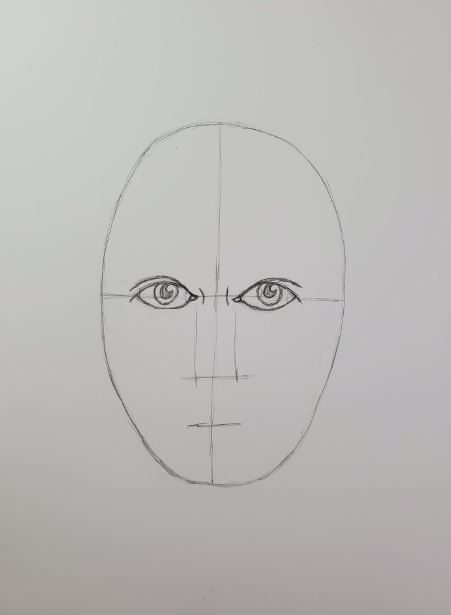
In life, we don’t have harsh lines all over our faces. However when drawing a face, it’s impossible to avoid using lines altogether.
For this lesson you’ll learn to use a combination of lines and shading. The more comfortable you get with drawing faces, the less you’ll need to draw lines.
Using your guidelines for placement, draw the end of the nose. Draw three curved lines. One at the bottom, and one on each side for the nostrils.
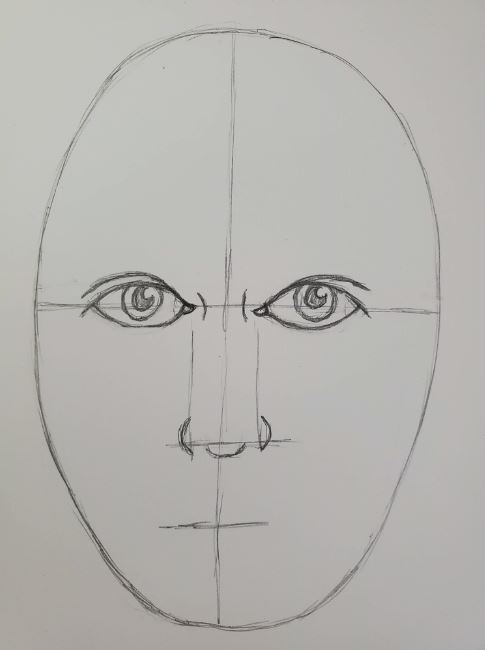
Connect each side with lines that curve upward. Make a small indication for the top ball of the nose.
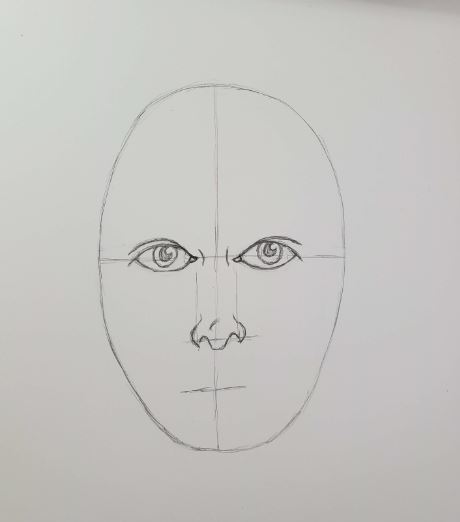
When you’re reasonably happy with the nose, move onto drawing the mouth. Don’t worry, at this point, about everything looking perfect. You can fix things as you go.
Drawing the Mouth
The width of your mouth should go from pupil to pupil. I drew lines to illustrate this point. You can add these lines if it helps, or just use the pupils as a reference point.
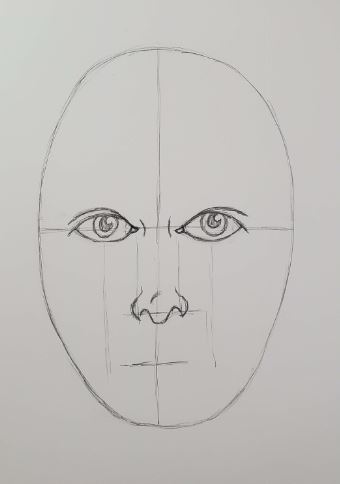
The way you draw your mouth with vary slightly from person to person. Women, for example, will have bigger lips than men.
Start your mouth by drawing the area between the lips. Draw the bottom of the upper lip. This line should not be perfectly straight.
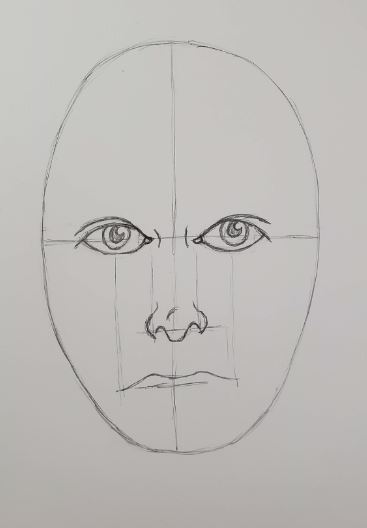
If you’re using a reference photo, look closely at the way this line curves.
Next, draw the upper line of the lower lip. If the lips are pressed together, you’ll only need one line for the area where the lips meet.
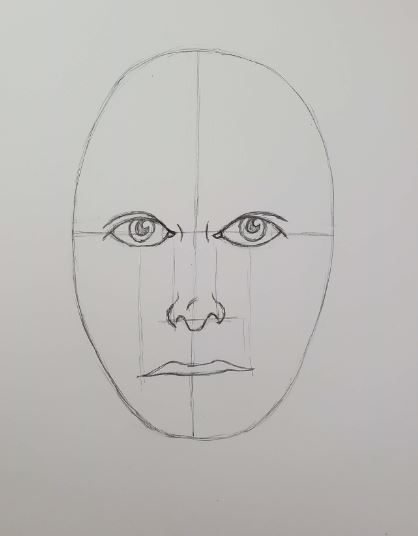
Now draw the bottom edge of the lower lip. Again, pay close attention to how it curves.
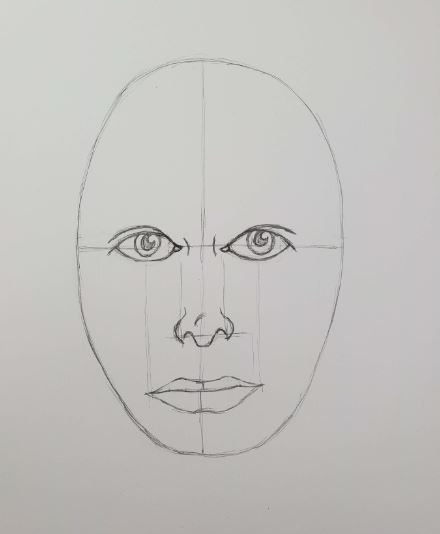
Finish the mouth by drawing the upper edge of the upper lip.
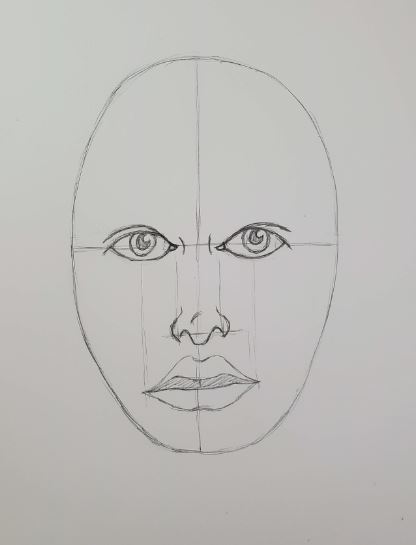
Drawing Eyebrows and Hair
Draw in some rough indications of where your eyebrows will go. Get the shape and positioning down. Women will typically have much thinner eyebrows compared to men.
You can also see here the indication of where the ears will go. Ears should be positioned from the eyes to the nose.
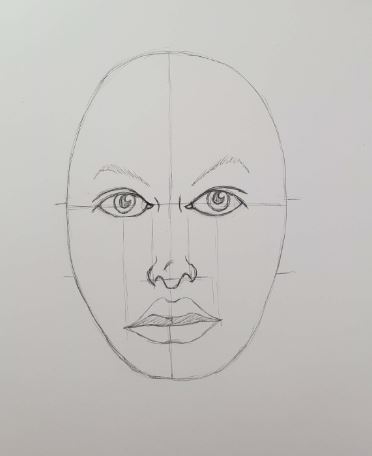
Then start roughing in where the hair will go. Now is a good time to draw the neck as well.
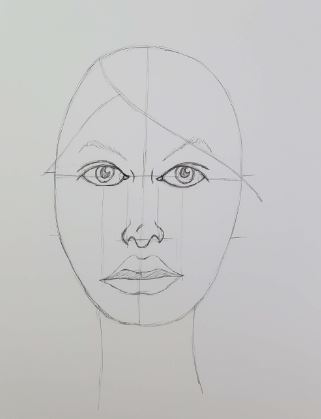
When you draw the top of the hair, make sure you extend it beyond your initial head shape.

Continue drawing the hair in whatever style your portrait drawing will have. This is a good time to draw the ears as well.

Use an eraser to start cleaning up your drawing and removing your original guidelines. A Factis click eraser works really well for this.
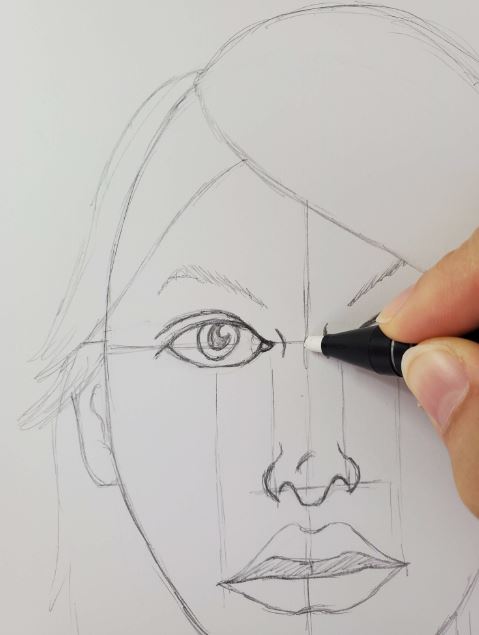
Shading Your Portrait
Start adding in some shading and refine your drawing. Some areas, like the bridge of the nose, look better if you soften the lines with a blending stump. There are a couple of different styles, and many different sizes available.
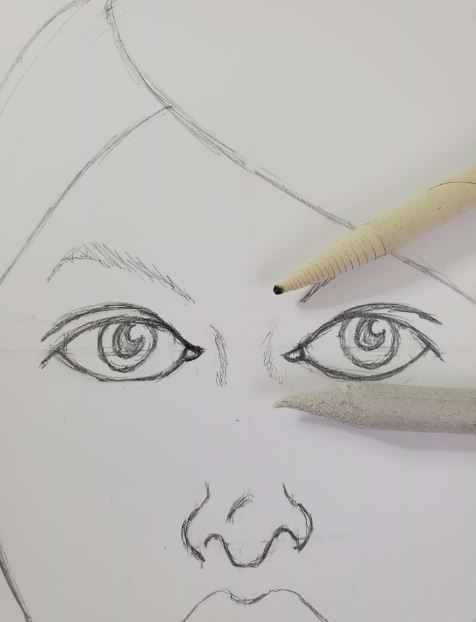
You want to soften the areas where there really aren’t indications of line, but rather an area of shadow. The bridge of the nose is a good example of this.
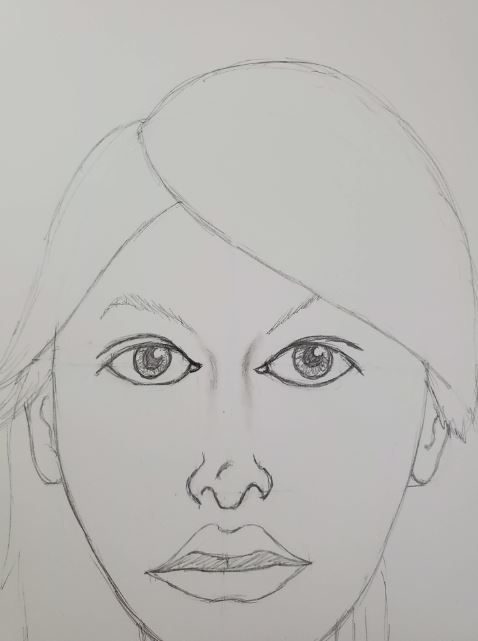
At this point you should start refining the shape of the face. Use your original oval shape as your guide, and add in some curves for the cheeks, and chin.
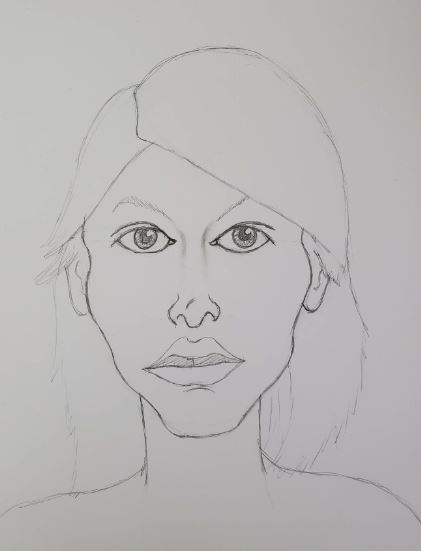
Draw in the rest of the eyebrows, and continue working on the shading.
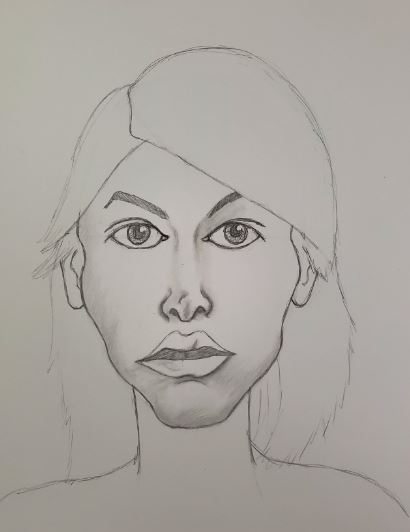
If you’re drawing a female face be sure to add in some eyelashes. They usually look better if you curve your lines as you’re drawing them.
Continue to work on the shading, adding in darker areas as you work your way around your face drawing.

Drawing Hair
For the hair, you want some individual strands. But you don’t want to try drawing the entire hair that way. The easiest way I found to draw hair is to add some lines where the darker areas are. Then use a blending stump to fill in the rest of the areas.
Add individual strands sparingly.

The darkest areas of the hair will be around the face and neck. And usually at the part of the hair as well.

Use a piece of scrap paper underneath your hand to avoid smudging your drawing.

Continue working on your drawing, refining details and adding shading, until you’re happy with how it looks. And don’t be afraid to let your artistic style show through.
As you can see in my finished face drawing, she has big eye and lips. And her face shape is a bit exaggerated. This is because of my artistic style, and most likely from years of drawing caricatures.
It wasn’t my intention to draw her this way, but it just happened. And I’m okay with it because it represents me as an artist. You should be striving for the same thing. Develop your style, and above all else, enjoy the process. Art should be fun!
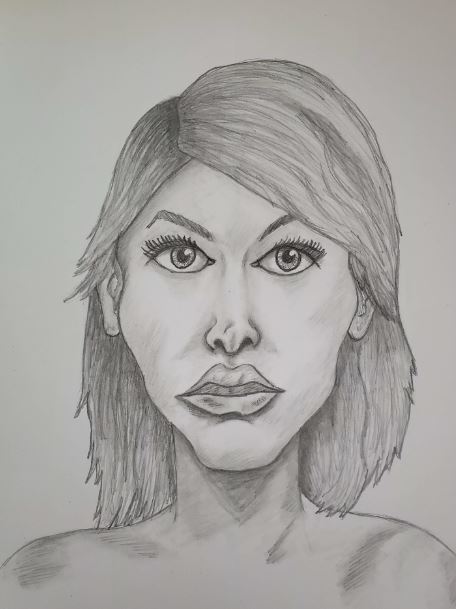
Face Drawings
I hope you enjoyed this step by step art lesson on how to draw a face. Drawing anything takes practice and repetition. Drawing a face may take even more practice than other subjects take. Don’t give up when you’re feeling frustrated. Keep going and you’ll see improvements.
What are your biggest struggles with drawing and creating art? Let us know in the comments.
Pin it for Later

